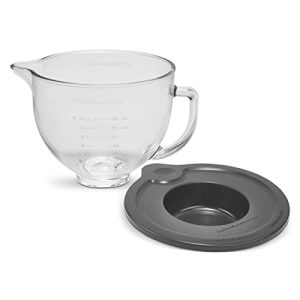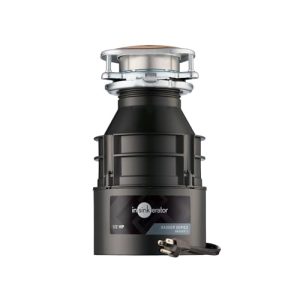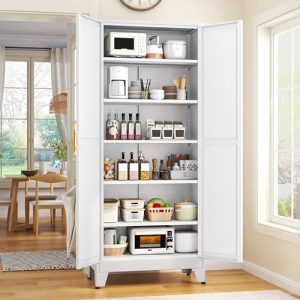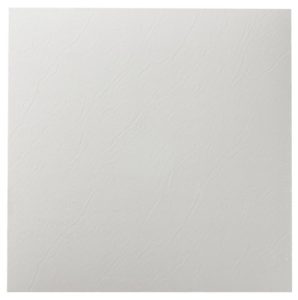Looking for a simple way to boost your kitchen office’s organization? Adding a desk drawer to your kitchen office cabinets can be a game-changer.
Imagine having a dedicated space right at your fingertips to store pens, papers, and small gadgets—keeping your work area tidy and efficient. In this guide, you’ll discover easy steps to transform your cabinets into a smart workspace that fits your daily needs.
Ready to make your kitchen office work harder for you? Let’s dive in and get started!
Choosing The Right Drawer
Choosing the right drawer for your kitchen office cabinets makes a big difference. A well-chosen drawer fits perfectly, looks good, and works smoothly. This section helps you pick the best drawer by focusing on important details. Take your time to decide on size, material, and slide type.
Measuring Your Cabinet Space
Measure the width, height, and depth of the cabinet where you want the drawer. Use a tape measure for accuracy. Write down these numbers. Check for any obstacles inside the cabinet that could block the drawer. Leave some space for the drawer slides on each side. Accurate measurements ensure the drawer fits well and opens fully.
Selecting Drawer Materials
Choose materials that match your kitchen office style and budget. Common options include:
- Wood:Strong and classic, but may be costly.
- Plywood:Stable and less expensive than solid wood.
- MDF:Smooth and affordable, but less durable.
- Metal:Durable and modern, good for heavy use.
Consider moisture resistance. Kitchen areas can be damp. Pick materials that last and stay attractive.
Types Of Drawer Slides
Drawer slides affect how your drawer opens and closes. Choose from these types:
- Side-mount slides:Attach under the drawer sides. Easy to install and strong.
- Under-mount slides:Hidden under the drawer. Look clean and work smoothly.
- Center-mount slides:Attach under the center. Best for light loads.
- Ball-bearing slides:Offer smooth, quiet movement and support heavy weight.
Pick slides that fit your drawer size and use. Good slides make daily use easy and quiet.
Preparing Your Tools And Materials
Gather all necessary tools like a drill, screws, measuring tape, and a saw before starting. Choose quality materials for a sturdy, lasting desk drawer in your kitchen office cabinets.
Creating a functional kitchen office space with added desk drawers is a fantastic way to maximize utility and maintain organization. Before diving into the installation process, it’s crucial to gather your tools and materials. Proper preparation ensures a smooth experience and minimizes disruptions. Let’s break down what you need to get started.Essential Tools Checklist
Having the right tools at your disposal is half the battle won. Here’s a concise checklist to make sure you’re equipped:- Drill and drill bits
- Measuring tape
- Screwdriver set
- Level
- Pencil and notepad
- Safety goggles
- Clamps
Gathering Hardware And Supplies
Once your tools are ready, focus on the hardware and supplies. Choosing the right materials will ensure durability and a seamless look.- Drawer slides (full-extension recommended)
- Drawer handles or knobs
- Wood glue
- Wood screws
- Sandpaper or a sanding block
- Paint or wood finish (optional)
Removing Cabinet Doors And Shelves
Removing cabinet doors and shelves is a crucial first step when adding a desk drawer to your kitchen office cabinets. This task creates the space you need for the drawer installation and ensures a clean, functional setup. Knowing how to do it safely and efficiently saves you time and prevents damage to your cabinets.
Safely Detaching Doors
Start by opening the cabinet doors and locating the hinges. Most kitchen cabinets use simple screws or clips to hold the doors in place. Use a screwdriver that fits well to avoid stripping the screws.
Support the door with one hand while loosening the screws with the other. This prevents the door from falling and causing injury or damage. If your doors have clips instead of screws, gently press or lift the clips to release the door.
Once detached, place the doors on a soft surface like a towel or carpet. This keeps them safe while you work on the drawer installation. Have you ever accidentally scratched a door during a project? Taking a moment to protect your materials is worth it.
Clearing Space For Drawer Installation
With the doors removed, turn your attention to the shelves inside the cabinet. Shelves can block the space where your new drawer will go, so they need to be taken out carefully. Check if your shelves rest on pegs or are screwed in place.
- If resting on pegs, simply lift the shelf up and out.
- If screwed in, use your screwdriver to remove the screws holding the shelf.
Keep the shelves and hardware in a safe place for possible future use. Clearing this space gives you a clear area to measure and fit the drawer accurately. How much easier would your workspace feel with a tidy, open cabinet ready for a custom drawer?
Constructing The Drawer Box
Constructing the drawer box is a key part of adding a desk drawer to kitchen office cabinets. This process involves careful measurement and precise cutting to ensure the drawer fits perfectly. It also requires assembling the parts into a sturdy frame that will hold your office supplies securely. Follow clear steps to build a drawer box that looks good and works well.
Cutting Drawer Components
Start by measuring the space inside your cabinet. Measure the width, height, and depth carefully. Use these numbers to mark your wood pieces accurately. Cut the drawer bottom, sides, front, and back panels using a saw.
- Choose plywood or hardwood for durability.
- Cut the side panels to match the drawer height and depth.
- Cut the front and back panels to match the drawer width and height.
- Cut the bottom panel to fit inside the frame.
Make sure all edges are smooth to avoid splinters. Sand the pieces gently before assembly.
Assembling The Drawer Frame
Lay out the side, front, and back panels on a flat surface. Join the panels to form a rectangular frame. Use wood glue on the edges for a strong bond.
- Clamp the pieces together to hold them while drying.
- Reinforce the joints with nails or screws for extra strength.
- Fit the bottom panel inside the frame, securing it with glue or small nails.
Check that the drawer is square by measuring the diagonals. Adjust if needed before the glue dries. Let the drawer box dry completely before installing it in your cabinet.
Installing Drawer Slides
Installing drawer slides is key to creating smooth, functional drawers in your kitchen office cabinets. Proper slide installation ensures the drawer moves easily and stays aligned. Take time to measure and position the slides carefully. Follow precise steps to attach slides on both the cabinet and drawer sides.
Marking Slide Positions
Begin by measuring the height where the slides will go inside the cabinet. Use a pencil to mark a straight line on both sides. The line should be level and match the drawer height for smooth movement. Check the slide instructions for exact placement details. Mark screw holes on the line to guide the screws later.
Attaching Slides To Cabinet And Drawer
Separate the two parts of each slide: one attaches inside the cabinet, the other on the drawer. Align the cabinet slides with your pencil marks. Use a drill or screwdriver to fix the slides with screws. Attach the drawer slides to the sides of the drawer box. Make sure slides face the right way. Finally, carefully insert the drawer into the cabinet slides to test the fit and movement.
Mounting The Drawer
Mounting the drawer is a crucial step when adding a desk drawer to your kitchen office cabinets. It transforms the empty space into a functional storage area that’s easy to access. Taking your time here ensures a smooth glide and prevents future hassles.
Aligning And Inserting The Drawer
Start by carefully aligning the drawer slides with the cabinet rails. Make sure the rails are clean and free from debris to avoid any sticking or misalignment. Gently insert the drawer, keeping it level as you guide it into place.
Don’t rush this part. If the drawer doesn’t slide in smoothly, pull it out and check if the slides are properly secured. A small misalignment can cause the drawer to jam or not close fully.
Testing Drawer Movement
Once the drawer is inserted, open and close it several times to test the movement. It should glide effortlessly without sticking or wobbling. If you feel resistance, double-check the slide alignment and adjust screws as needed.
Ask yourself: does the drawer close flush with the cabinet face? A drawer that sits perfectly flat looks professional and functions better. Smooth movement also means less wear over time, saving you future repairs.
Finishing Touches
Finishing touches bring your desk drawer to life. They blend the new piece with your kitchen office. These final steps boost both function and style. Careful attention here ensures a seamless look and feel.
Adding Drawer Fronts And Handles
Choose drawer fronts that match your cabinet style. Attach fronts securely using screws or wood glue. Handles add character and ease of use. Pick handles that complement your room’s theme.
- Align fronts carefully for an even fit
- Mark handle placement before drilling
- Use a level to keep handles straight
- Tighten screws firmly but avoid over-tightening
Painting Or Staining For Match
Paint or stain the drawer to blend with cabinets. Test color on a scrap piece first. Use smooth, even strokes for a clean finish. Allow drying time between coats for best results.
- Sand surfaces lightly before applying paint or stain
- Use primer for better paint adhesion
- Apply thin coats to prevent drips
- Seal with clear varnish for durability
Maintenance Tips
Adding a desk drawer to kitchen office cabinets improves storage and workspace. Measure carefully and choose the right drawer slides for smooth operation. Secure the drawer firmly to avoid wobbling and ensure durability.
Maintaining your kitchen office cabinets with desk drawers ensures they last longer. Regular care keeps the drawers sliding smoothly and looking clean. Below are some practical tips for maintaining your desk drawers effectively.Keeping Slides Lubricated
Slides need regular lubrication to function well. Use a silicone-based lubricant for best results. Apply it along the slides and wipe away excess with a cloth. This reduces friction and noise, making your drawers glide smoothly.Regular Cleaning Suggestions
Clean your drawers to prevent dust and dirt buildup. Use a damp cloth to wipe the surfaces. For stubborn stains, a mild soap solution works wonders. Ensure the drawers are dry before closing them. This prevents mold and keeps them fresh.Frequently Asked Questions
How Do I Measure For A Desk Drawer In Cabinets?
Measure the cabinet’s interior width, height, and depth precisely. Ensure enough space for drawer slides and smooth opening. Accurate measurements help select the right drawer size and avoid installation issues.
What Materials Are Best For Kitchen Office Drawers?
Use durable materials like hardwood or plywood for strength. Choose moisture-resistant finishes to handle kitchen humidity. Quality materials ensure long-lasting, functional drawers suitable for office supplies.
Can I Install A Desk Drawer Myself?
Yes, with basic tools and careful measuring, installation is doable. Follow step-by-step instructions and use proper hardware. DIY saves money but requires patience and precision for best results.
How To Choose The Right Drawer Slides?
Select slides based on drawer weight and cabinet size. Soft-close slides add convenience and reduce noise. Quality slides ensure smooth operation and durability over time.
Conclusion
Adding a desk drawer to your kitchen office cabinets saves space and keeps things tidy. It provides easy access to important items while you work. The process is simple and can fit most cabinet types. Small changes like this improve your kitchen’s function and style.
Try it yourself and enjoy a more organized workspace every day.

Sophie Hartwell is the founder of KitchenQuik.com, where she shares kitchen tips, smart cooking hacks, and the best product picks to make everyday cooking easier and more enjoyable.




